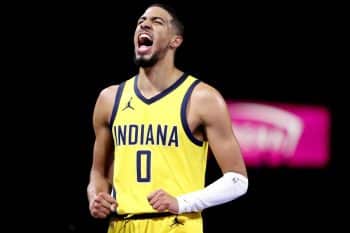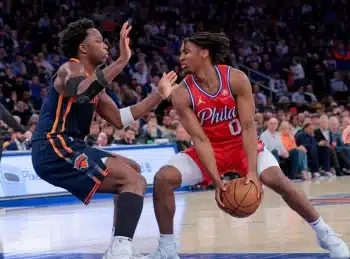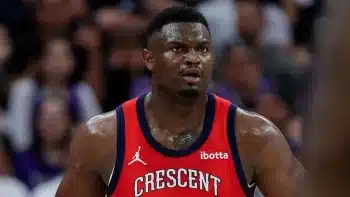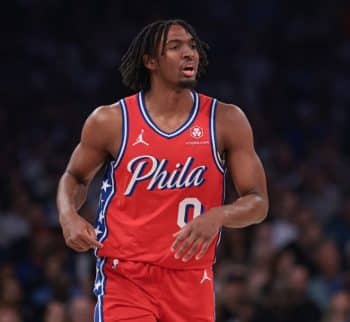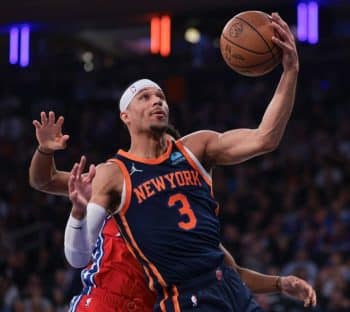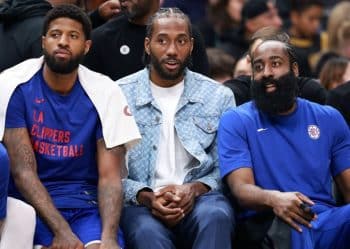NBA
Clearing Out the Logjams Around the NBA
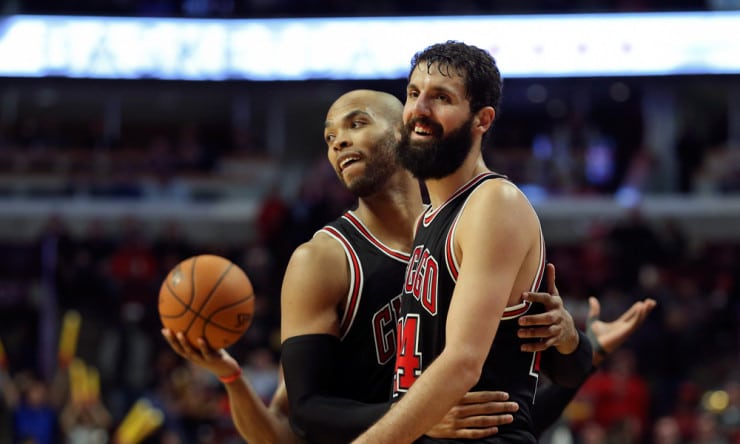
Depth is a good thing in the NBA. However, a logjam at one position is not. A deep bench helps you win brutal games in mid-February when everyone is tired, whereas having a logjam can haunt your season.
In a logjam, where a team has several players of similar skill level at the same position, ego issues can crop up. Every player wants to prove himself, earn a starting position and play more minutes — and that’s not wrong. They need to show teams that they deserve their next big contract. But it’s difficult when two players are showing the coaching staff near equal talent, effort and production.
There are two ways to fix a logjam. Either trade away one of the pieces for a player at a different position, or wait for one of the players to make themselves the clear-cut starter. Here’s a look at some logjams across the league with some thoughts on how they will unfold going forward.
Los Angeles Clippers backcourt:
The Clippers needed depth and now they have it, but they could have a logjam in their backcourt. Chris Paul is the point guard, Blake Griffin is the power forward and DeAndre Jordan is back in the fold at center. Those positions are set. But that swingman rotation is still to be determined, with Lance Stephenson, J.J. Redick, Paul Pierce, Wesley Johnson, Jamal Crawford and Austin Rivers competing for playing time. It’s subjective, but these players are fairly equal in skill at this stage of their careers, and they bring different things to the table.
For the Clippers, some of the decisions are made for them. Redick is a pure shooter and really should be a starter to help spread the floor since Griffin and Jordan generally gravitate toward the hoop. Pierce is a veteran on his last legs, who will limit his minutes and likely only play heavily in the playoffs and in crucial situations.
Crawford has been a great contributor for L.A. and he’s a two-time winner of the Sixth Man of the Year award (most recently in 2013-14), joining players like Kevin McHale, Detlef Schrempf and Ricky Pierce as one of only four players to earn this honor twice. But Crawford is 35 years old and not what he used to be. He is also rumored to be on the trading block. Stephenson’s career is a roller coaster. He rose to prominence with the Indiana Pacers (to such heights that he was discussed as an All-Star snub), and since has been traded twice. It’ll be interesting to see if he can have a strong bounce-back year after a miserable 2014-15 season with the Charlotte Hornets. Johnson is a journeyman and probably the worst player of the group, but is young and athletic and could see some minutes, especially as they try to keep Pierce fresh. Rivers re-signed with the team over the offseason and will try to give the second unit a boost.
The depth chart currently has Redick and Stephenson starting and that’s probably how it’ll stay with the occasional spot start from Pierce, who will also finish a bunch of games. Crawford may get dealt, with Johnson and to some extent Rivers serving as low-ceiling injury insurance. This all depends on Stephenson being productive and consistent, which is dubious.
Phoenix Suns backcourt:
The Suns’ starting lineup is set with the two $70 million men, Eric Bledsoe and Brandon Knight, leading the way. But who is the first guard off the bench? It’s between 29-year-old swingman Sonny Weems, who has been overseas for years, 21-year-old energetic guard Archie Goodwin or 18-year-old rookie sharpshooter Devin Booker.
It seems it will be determined by the situation. If they stagger resting Bledsoe and Knight, either Goodwin or Booker could come in for one of the two guards. Weems is the best playmaker of the group, and would play with point guard Ronnie Price so between the two of them, the offense wouldn’t suffer. Weems could also play with either Goodwin or Booker, but a lineup with both Booker and Goodwin and without a playmaker would not work very well.
To help Phoenix secure a playoff berth, one of these three players needs to have a breakout season. Booker might have a leg up, as his elite shooting stroke sets him apart, but he’ll have to break through that steep rookie learning curve. Weems will have to be consistent, and show why the Suns were right to bring him over from Eastern Europe. Reliable defense will be a significant factor that influences who becomes the first guard off the bench for Phoenix.
Chicago Bulls frontcourt:
While the Bulls’ perimeter players (Derrick Rose and Jimmy Butler) are the team’s stars, they have some depth at the power forward position. Pau Gasol can also play center when Joakim Noah isn’t in the game, but he has typically played the four position most of his career. The other players in the mix are veteran Taj Gibson, stretch-four Nikola Mirotic and rookie Bobby Portis.
Someone like Gibson could be moved in a deal to make room for the up-and-coming Mirotic and Portis. That would alleviates some of the logjam, but there would still be some decisions to be made. If Gibson is going to be traded, they’d have to play him more so he can increase his value. Also, Mirotic has played well and Portis has impressed since being drafted 22nd overall this summer, so someone is going to be left out (even if Gibson gets dealt). In the Bulls’ first game, Portis was the odd man out (playing zero minutes). Keep an eye on this situation because Chicago certainly has a number of attractive trade chips in their frontcourt.
Detroit Pistons backcourt:
The Pistons’ backcourt is a bit of a conundrum. They have two starting-caliber point guards: Brandon Jennings and Reggie Jackson both have what it takes to lead the offense as the starter. It will take time to see which one will emerge this season, but keep in mind that Jackson just inked an $80 million deal whereas Jennings is in the final year of his contract.
Jackson is only 25 years old, is a good playmaker and can score when he wants to, he just needs to work on his efficiency (as last year he shot 43 percent from the field and 29.9 percent from behind the arc). Jennings is a year older and coming off an injury, but is a much better shooter from the three-point line (36 percent last year).
Jackson has the job to himself right now, but when Jennings comes back, he’ll push Jackson for the starting gig and could overtake Jackson if he falters. It’s worth noting that Jennings has said he’s open to coming off of the bench as the sixth man for the good of the team.
Houston Rockets frontcourt:
Donatas Motiejunas and Terrence Jones are battling for the starting spot at power forward in Houston. Jones is a 6’9, energy-and-hustle guy who can hit the occasional jumper (last year he even increased his range to the three-point line, where he shot 35.1 percent). On the other hand, Motiejunas is a legit seven-footer with a similar three-point shot (36.8 percent in 2014-15), but also an array of post-moves that are reminiscent of long-time former Rockets forward Luis Scola.
Jones is the starter at the moment and may fit better alongside Dwight Howard in the frontcourt. Motiejunas is still injured after having back surgery in April. There hasn’t been a recent update on his return, giving Jones the edge early on. We’ll see if the Rockets stick with him once Motiejunas is healthy and able to compete for more minutes.
